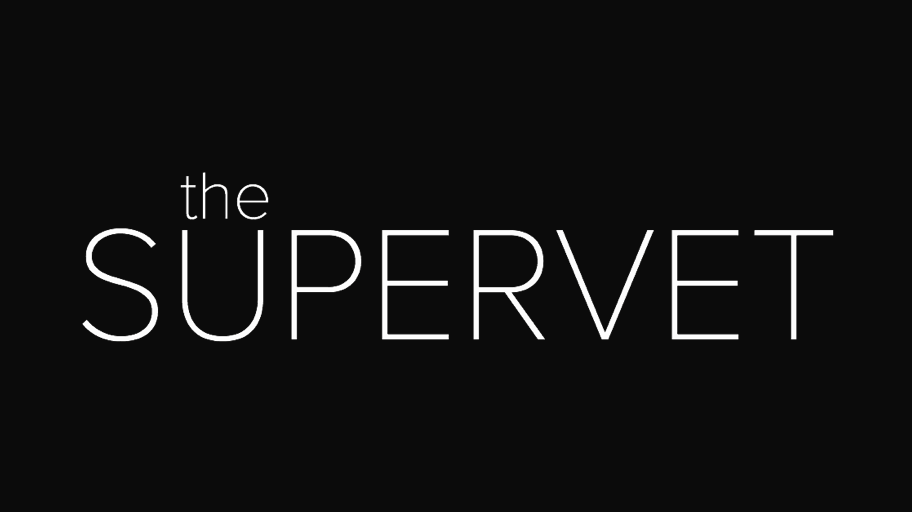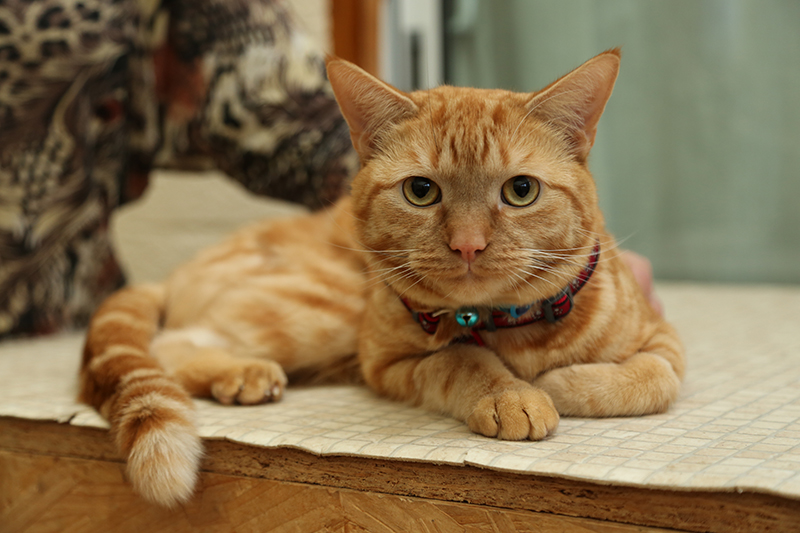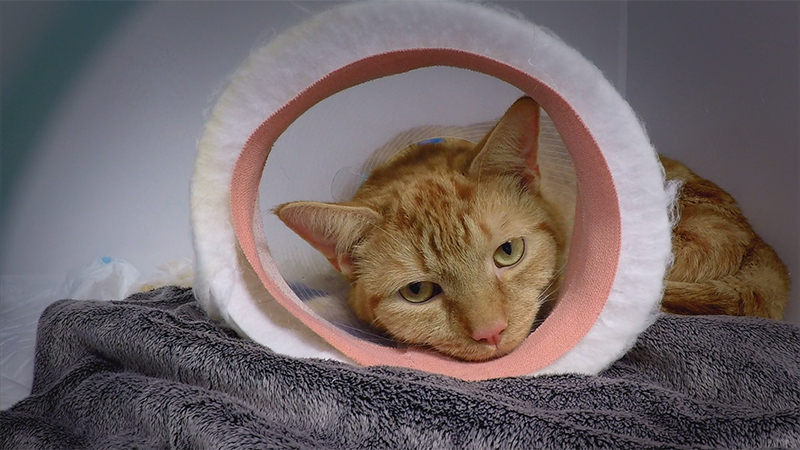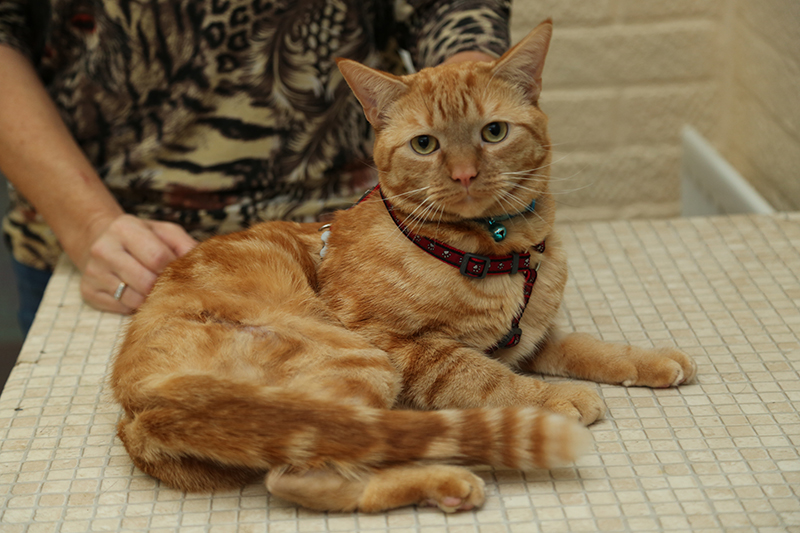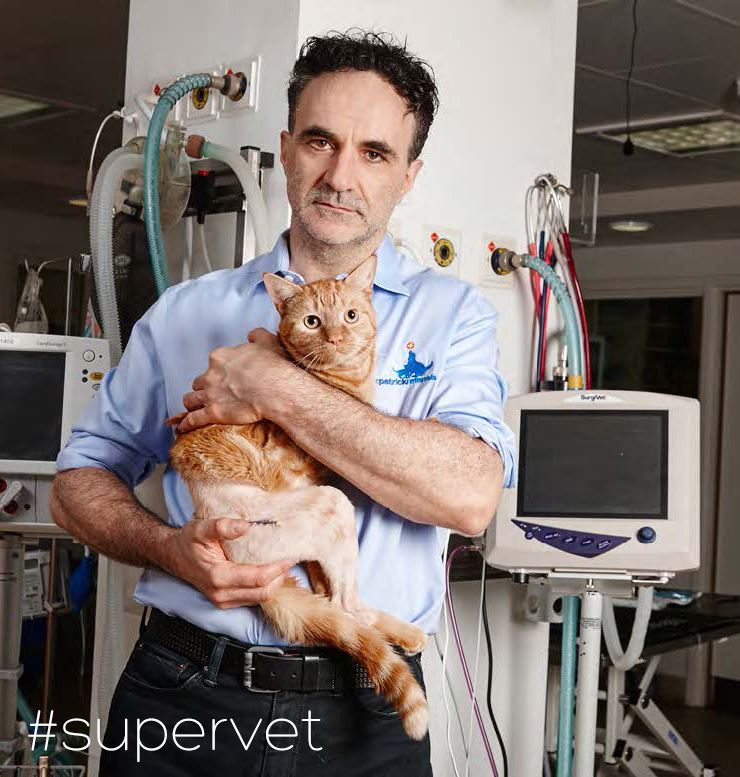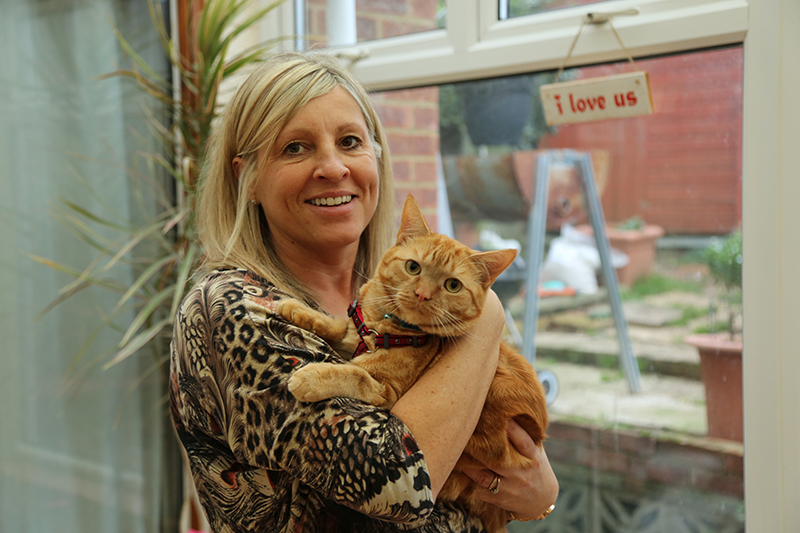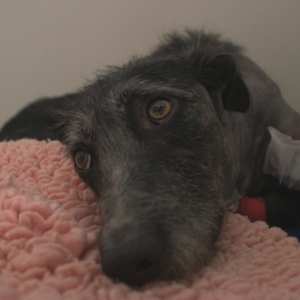Jersey
Serial rescuers Ruth and Chris (whose family includes not just dogs and cats but also chickens, ducks, quail and goldfish) came to Fitzpatrick’s in 2015 with their beloved three-legged cat Jersey (found in a dairy two and a half years ago). When he was rescued, one of his hind legs was so badly broken it had to be amputated. Over the years the extra stress on his remaining hind leg caused the kneecap to slip, and x-ray pictures revealed an additional problem with Jersey’s hip: osteoarthritis. Noel was able to treat the knee with a routine surgery, but weeks later Jersey was still in severe discomfort because of his hip pain, which presented a dilemma: there was no precedent for hip replacement in a three-legged cat, and this surgery is uncharted territory, even for Noel, and comes with significant risk. “The biggest problem is, if the operation goes wrong you can’t amputate that leg. So it may be game over.” Five years later, and after many sessions of hydrotherapy, Jersey’s bounce is back and he’s still top cat at home.
Their Story
Receptionist Ruth and her husband Chris bring in their rescued 2-year-old three-legged cat Jersey, whose back leg was amputated at Ruth’s practice when he was just a kitten after being found abandoned with a severely broken leg. They have a house full of rescued animals, but timid Jersey has a special place in Ruth’s heart.
The Problem
Jersey has started to struggle with his remaining back leg, so Ruth and Chris have brought him to Professor Noel Fitzpatrick to see what can be done for him. Noel suspects that Jersey has a dislocated knee cap, which could be potentially solved with a straightforward operation to improve the movement within the remaining back leg.
However, pre-op imaging reveals that Jersey also has another problem. Jersey has bad arthritis in his hind hip, which will continue to deteriorate without intervention and is causing significant pain. Jersey needs a Total Hip Replacement, but to Noel’s knowledge, this has never been done on a three-legged cat before.
Ruth faces the difficult decision, to either go without the hip replacement and see his condition get worse over time or go ahead with it not knowing whether the operation will work.
The couple decide that the chance to give Jersey a shot at a good quality of life on his remaining three legs is worth it – and Noel goes ahead with the advanced procedure.
Treatment
Jersey’s operation is very different to normal total hip replacements in cats as naturally, Jersey uses his remaining leg differently to other cats. Jersey places his leg more towards the centre of his body to balance himself on three legs and so the placement of the implants must account for this, even the tiniest incorrect angle of the cup placement could cause his hip to pop out. It’s a nail-biting surgery, but Noel and the team make it through successfully.
A week later and Jersey is getting stronger every day. Jersey is able to go home with a few physio exercises and strict rest while he heals.
Outcome
Six weeks after the operation Noel also recommends a course of hydrotherapy, so unfortunately for Jersey, getting his muscles stronger means getting wet!
His perseverance and tolerance of his rehabilitation pays off, and three months later Jersey is thriving at home, and Ruth is thankful every day that her friend is living a happy healthy life.
